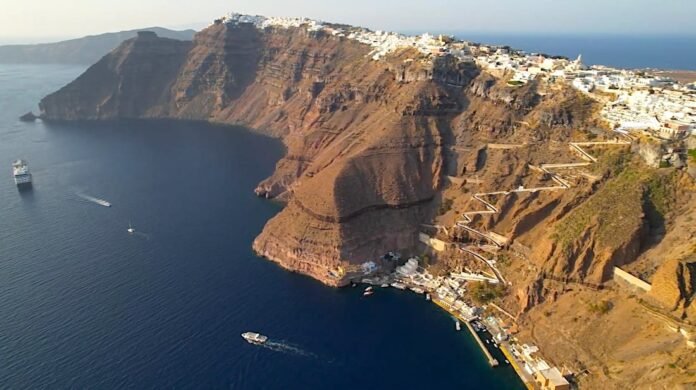
Seismic activity continued at sea off the islands of Santorini and Amorgos in the Aegean Sea on Saturday with several earthquakes measuring between 4.0 and 4.9 on the Richter scale, forcing more people to flee the island over concerns about the unusual situation.
The frequent tremors began at the end of January in the sea area between the two islands, and the epicenters of the seismic activity gradually moved closer to Amorgos, off its southern town of Arkesini, close to the uninhabited Anydros islet.
Over 800 earthquakes over 3.0 magnitude on the Richter scale, and a maximum intensity of 5.2, have been recorded between February 1 and the morning of February 8.
A state of emergency was declared for the municipality of Santorini on Thursday, which will apply until March 3, 2025, aiming to facilitate the competent state services and authorities to deal with emergency needs and manage the repercussions of the seismic activity on the island.
Schools to remain closed for second week
The Greek Climate Crisis and Civil Protection Ministry has renewed its decision that schools on the islands of Santorini, Ios, Anafi, and Amorgos remain shut for a second week while frequent earthquakes continue to rattle the area multiple times per day, even per hour at times.
Two committees met on Saturday to discuss seismic activity and potential threats. A statement read that seismic activity at Anydros islet, between Santorini and Amorgos, remains stable. The spot has been highlighted as the epicentre of a series of tremors in the past days.
According to the statement, earthquakes in the region of Anydros are due to underwater faults running northeast-southwest, and are not related to volcanic activity at the Old and New Kammeni islands and the underground volcano of Columbo, both near Santorini.
In addition, seismic activity within the caldera of Santorini remains at the same low level as in previous days.
The committee reiterated the necessity of preventative measures, including the avoidance of large gatherings indoors and of coastal areas during strong earthquakes.
The ports of Ammoudi, Armenis, Korfos, and the Old Port of Fira on Santorini remain closed to the public.
University of Athens analyses Santorini earthquakes phenomenon
An analysis by the Earthquakes Laboratory of the National and Kapodistrian University of Athens, published on Thursday, February 6, observed from recent days’ data that “although a large number of earthquakes with 4.0 magnitude on the Richter scale continue to occur, the seismicity rate shows a relative decrease, in terms of earthquakes detected by both conventional and artificial intelligence methods.”
The Laboratory, which operates under the University’s Geology Department, is experimenting with innovative artificial intelligence and machine learning methods for the automatic analysis of the large volume of available seismic data from the Unified National Seismograph Network (UNES).
These methods have the potential to detect ten times more seismic events than those detected by conventional methods, while at the same time providing highly reliable results.
In interpreting the seismic events off Santorini between January 26 and February 6, the analysis pointed out that, “although it is likely that this is a cluster of earthquakes of large magnitudes, compared to other recent seismic clusters in Greece, one possibility is that its activity will continue with gradually smaller magnitudes and a smaller number of earthquakes, but will last for many months, as in the case of the Thiva seismic cluster.”
The apparent peak of activity on February 3 and its gradual decrease until February 6, point in this direction, it added.
Nonetheless, a second possibility that cannot be ruled out, is that this earthquake swarm stimulates the rupture of a significant part of a large active fault in the area, thus giving rise to a main earthquake, after which the activity would take the form of a typical post-seismic sequence.
“In such a case, the earthquakes swarm that preceded the main earthquake would be characterized (in retrospect) as a pre-seismic sequence,” it is noted.
